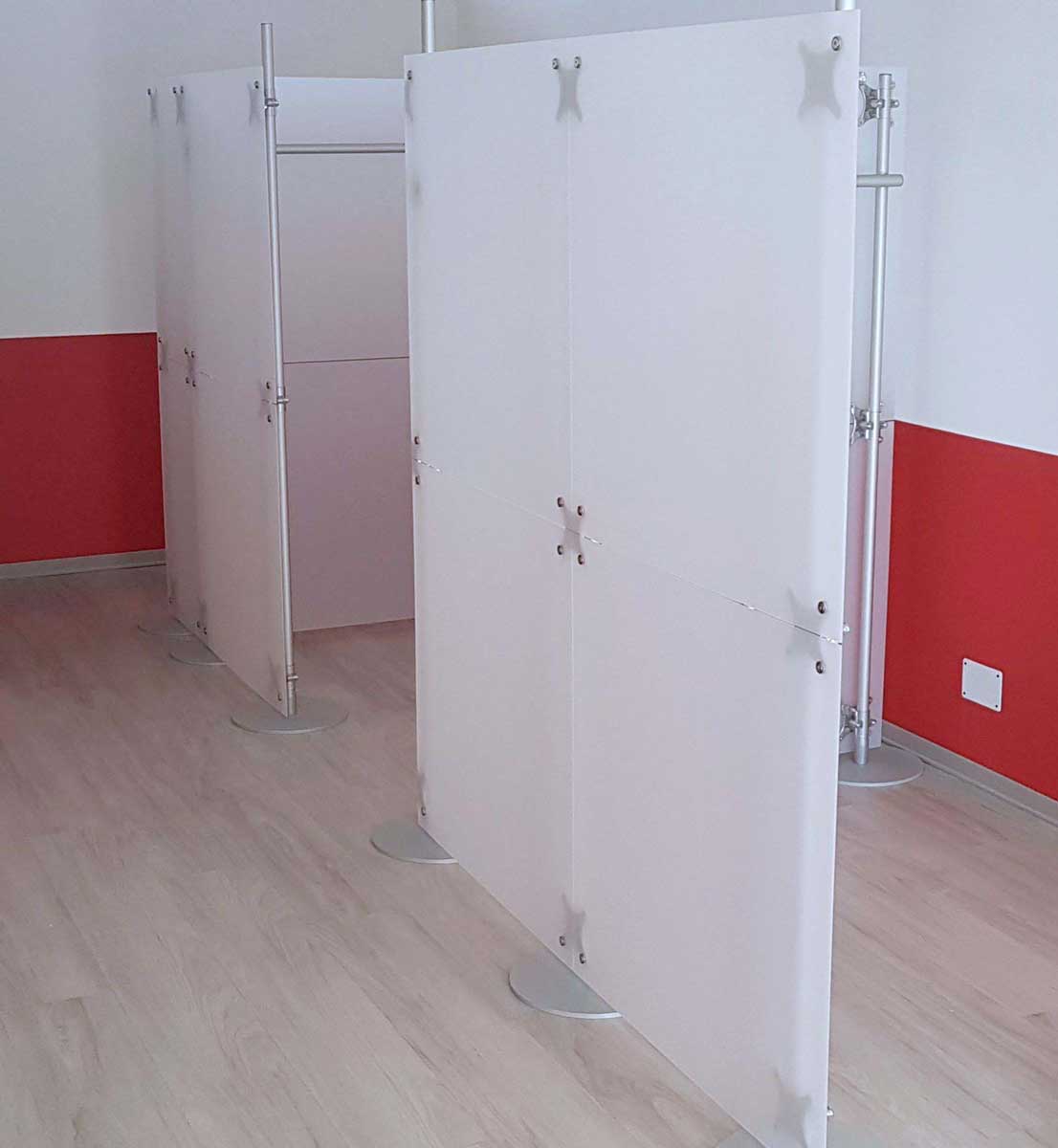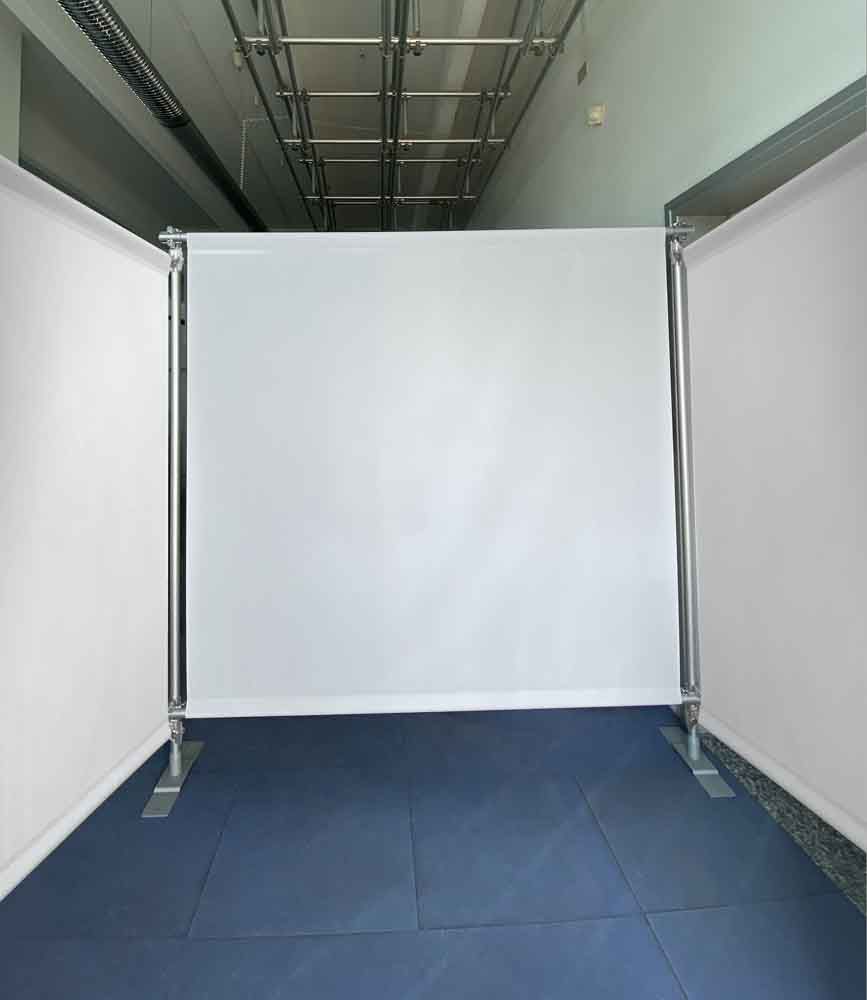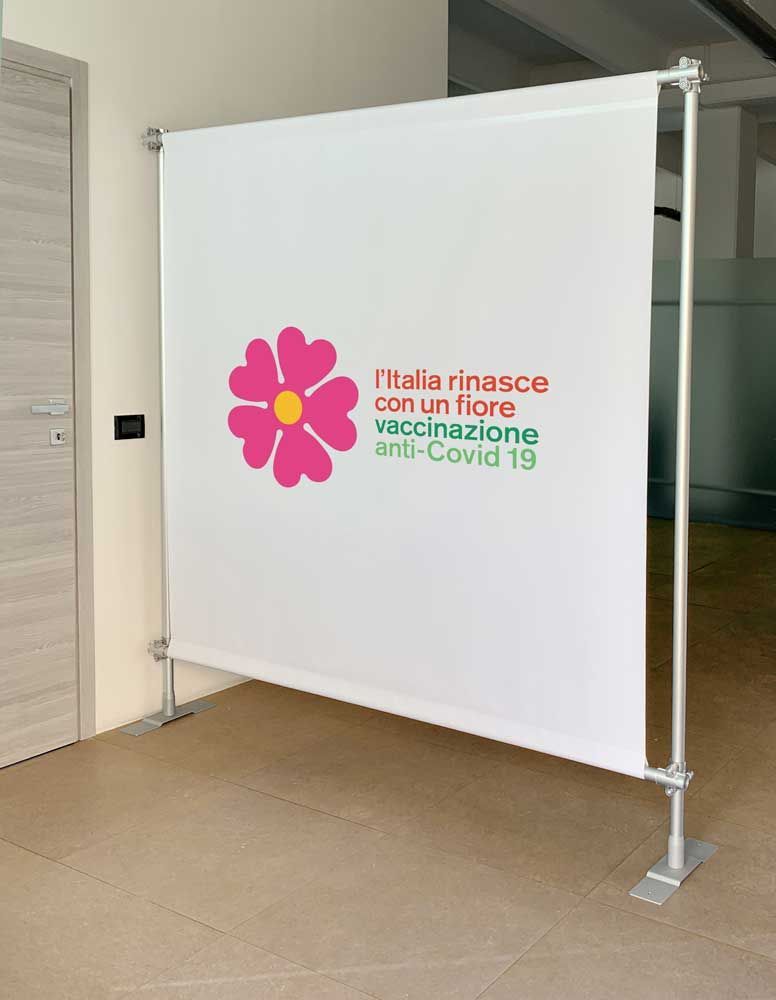PRODUCT CATEGORIES:
CABIN
FURNISHING SOLUTIONS
SOLUTIONS FOR:
CASE STUDY:
DOWNLOAD:
CABINS FOR CLINICS, CLINICS, MEDICAL CENTERS, VACCINATION CENTERS CABINS FOR CLINICS, CLINICS, MEDICAL CENTERS, VACCINATION HUBS
Cabins for medical-health facilities are environments intended for clinical or therapeutic uses and must guarantee the hygienic, safety and comfort conditions necessary to carry out medical activities.
Many activities are performed in these cabins, such as medical visits, sampling, therapies, diagnostic tests, but also beauty or wellness treatments. Therefore, the cabins must be designed to allow easy accessibility and adaptability to different needs.
Booths should be large enough to allow movement of medical personnel and patients. Furthermore, they should have surfaces and materials that are easy to clean and disinfect to ensure a hygienic environment.
As for the materials, they should be resistant, non-slip and anti-scratch.
Non-slip materials are essential for the floor, to prevent accidental falls, while anti-scratch materials are essential to avoid scratches or damage to furniture, such as beds or armchairs.
The materials used should also possess some properties, such as resistance to water, resistance to stains, the ability to withstand disinfectants and resistance to wear.
The most commonly used materials include stainless steel, aluminum, PVC and acrylic.
In summary, the cabins for medical-healthcare facilities must be designed to allow easy access for patients and healthcare personnel, guarantee hygiene and safety, and use resistant and sanitizable materials, the surfaces must be easy to clean and sanitize .
MOBILE PARTITION WALLS TO CREATE RESERVED SPACES IN CLINICS, PRACTICES, DOCTOR'S PRACTICES, HEALTHCARE STRUCTURES
Increasingly, health professionals turn to qualified planners - designers and architects - who are specialized in this specific sector to furnish their medical offices: attention to colours, textures, details - everything is studied down to the smallest detail so that the perception of spaces instill in the patient a positive feeling of acceptance, warmth and trust.
Forget the era of folding screens in fabric: the modern screens for medical offices wink at design: cutting-edge materials that can be sanitized and regenerated, satin textures and high-tech details.
Our partition walls are design furnishings and aspire to be used also in medical offices, dental offices, aesthetic medicine offices, ophthalmologists, medicine and surgery centres, veterinary offices and centres, clinics, physiotherapy offices and kinesitherapy.
- Our partition walls are completely modular and therefore adapt to different locations both indoors (gyms, hospitals, pharmacies, etc.) and outdoors (tensile structures).
- The standard heights proposed are 180 and 200 cm.
- It is possible to create both linear dividers and L-shaped solutions, or boxes complete with closure on 3 sides.
- The walls can be joined together in order to create multiple workstations.
The mobile walls for vaccine administration centres, vaccination hubs, are suitable for creating:
- waiting areas for patients
- acceptance area
- box for carrying out vaccines
- post vaccine patient monitoring area
As for the materials we can offer:
- light walls buffered with technical PVC sheets walls buffered with rigid foam panels
Both solutions are characterized by simplicity of installation and ease of cleaning/maintenance.
—
The main types of partition walls are listed below:
• Separate self-supporting to divide the space within open space environments
• Free-standing dividers to separate workstations within a room
• Lightweight wheeled dividers that can be moved to quickly reconfigure spaces
Our mobile dividers are made of durable and easy-care materials:
- the vertical tubes are made of anodized and satin aluminum the ground bases are made of powder-coated carbon steel the attachments for the panels are made of transparent polycarbonate and die-cast aluminum the panels are made of methacrylate or pvc and are available in different colours:
NEUTRAL SHADES - white, greys, bleached woods and dark woods: choose these classic colors if you want to give your furniture a minimalist and contemporary style at the same time. These shades go well with any existing decor - both classic and modern. The choice of neutral tones is also recommended when other characterizing colors are already present in the room.
WARM SHADES - orange, red, wood-effect textures: choose these colors to make the environment lively and colourful, or warm and reassuring. For example, red and orange can be used together to give an energy boost to an otherwise subdued environment. Capable of giving the room a sparkling and playful tone, now a feeling of welcome and tranquility, these colors are recommended for waiting rooms of pediatric centers and dental surgeries for children. Perfect in combination with wooden furnishings and floors, to reinforce the perception of interiors with a warm and familiar character.
COOL SHADES - lime green, light blue, metal effect textures: choose these colors to enhance the perception of a dynamic and contemporary environment. Also perfect in combination with satin white, the cold shades give the sensation of tidy, fresh and clean environments. The various nuances can be freely combined to furnish dental surgeries, sports medicine centers and aesthetic medicine studios. The "coldest" shades are suitable for both reception areas and operational areas.
More and more frequently we have the opportunity to see how, in the interior design sector, processes of contamination are implemented between areas that are sometimes totally unrelated to each other.
Gone are the days when the clinic evoked images of white and aseptic rooms, nowadays, the design of spaces intended for health and personal care is entrusted to design professionals and the current trend is to create environments designed for well-being of the patient, interiors in which furnishings, shapes and colors are carefully studied in order to create environments that are comfortable, welcoming and relaxing at the same time.
Colours: if in the past white and light colors were considered an obligatory choice, today possible alternatives are being evaluated: pastel colors - as an alternative to pure white - but also bright shades, if the target and the business sector allow it or even make it preferable; think of the waiting rooms dedicated to pediatric patients: a bright color helps to make the atmosphere playful and fun; an orange wall, for example, in a children's dental office can make the environment more cheerful and informal.
Colored movable partition walls are the ideal solution to respond to this request.
Enveloping shapes: if space permits, introducing a curved element (a curvilinear wall, a rounded reception desk, spherical light points, etc.) helps to create a familiar and intimate atmosphere. Therefore, in the choice of movable partition walls, it is possible to adopt not only linear shapes but also soft shapes in line with a mood inspired by sensations of welcome and well-being
Lights: an aspect that is too often overlooked is the "colour" of the light: if it is true that a high degree of definition is required in the medical office, which only cold light is able to offer, in the waiting room one can on the contrary, use a warm light, below 3500-4000°K, so as to obtain a pleasant, warm and welcoming atmosphere.
Surfaces: the first requirement is certainly that the furnishings are made with materials that are easy to clean. The critical issues that emerged with the advent of the pandemic have led designers and manufacturers to make enormous strides in research: the furniture and construction market is now able to offer new composite materials (plastics and metals in which chemical compounds are integrated such as silicon or titanium dioxide) and treatments to be performed on traditional materials (think, for example, of silver ion-based coatings) with the intention of offering antimicrobial and antibacterial surfaces.
Flexible furniture: the use of mobile furniture - modular and reconfigurable - made with light, high-performance and recyclable materials is sometimes preferable to custom-made fixed furniture.
From this point of view, the movable walls, the modular dividing panels, the temporary partition walls, represent an excellent furnishing solution for medical offices, clinics and clinics: light and easy to handle, they can be moved in a few moments inside of the premises.
The movable partition walls born as elements with a functional vocation - to separate areas, to "hide" a part of the room - today they are also chosen for aesthetic reasons as they are able, by themselves, to become protagonists of the environment in which they are enter.
The movable partition walls can be used inside the medical office for:
- beautify the reception area screen off the old desks and create stylistic unity in the representative rooms create separations between the waiting room seats divide the reception area from the secretarial area obtain an area reserved for pediatric patients within an open space environment create a breastfeeding area in clinics and medical centers divide the waiting room from the acceptance area create a changing room area inside the surgery shield the equipment inside the doctor's office divide the equipment in a doctor's office shared by several specialists divide a polyclinic into roomscreate corridors and walkways inside clinics and medical centerscreate a storage area inside a medical center
Mobile partition walls are useful for screening access areas reserved for medical personnel
Movable partitions are the ideal solution for creating a separate coffee area within a health clinic
The movable partition walls are used to create an archive area behind the doctor's office reception
The modular panels are suitable for realizing:
- therapy cabins
- motor rehabilitation cabins
- polyclinic cabins
- cabins for healthcare facilities
- clinic booths
- cabinets for doctors' surgeries
One of the most important things to evaluate, for those who are about to choose among the various solutions available on the market, is that the panels can be sanitized, so that they are suitable for use in:
• Hospitals;
• Medical centers;
• Dental offices;
• Public and private health facilities;
• Pharmacy
As far as sanitization is concerned, it is possible to use both sodium hypochlorite-based products and hydrogen peroxide, the two substances recommended by the WHO as the most effective for eliminating dirt and bacteria from surfaces.
Paxton Srl C.F. e P. IVA: IT01142870334
All our products are designed and manufactured in Italy
All our products are entirely conceived, designed and manufactured in Italy
CONTACTS
Operational headquarters:
Via delle Industrie, 2
26862 Guardamiglio (LODI)
Milan - Lombardy - Italy
WHERE WE ARE
Tel +39.0377.506607
email: info@paxton.it
All rights reserved | privacy policy









